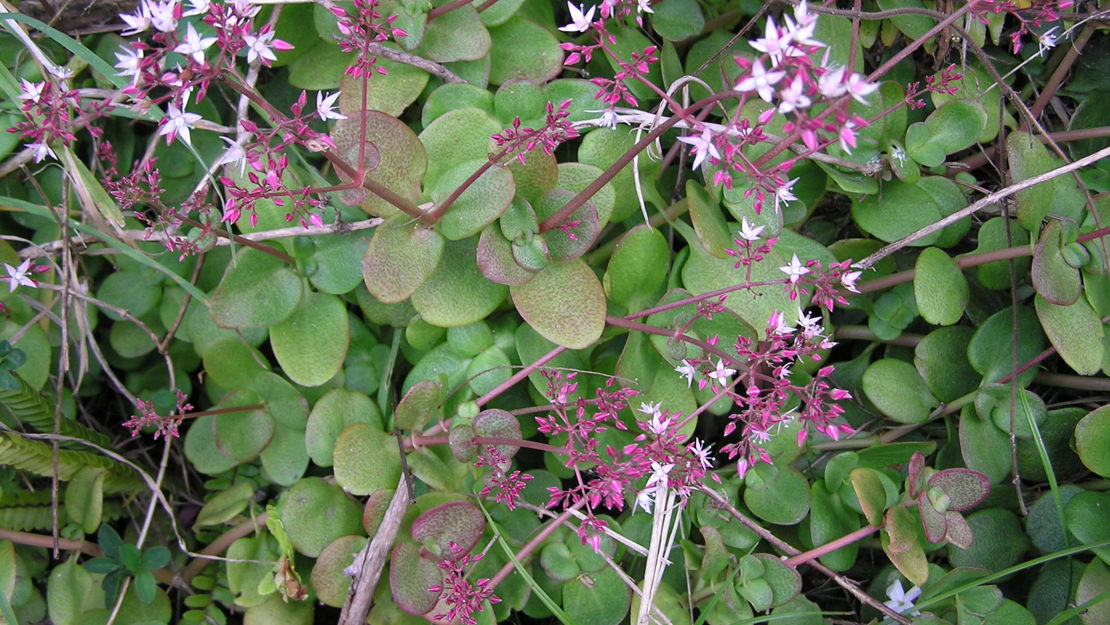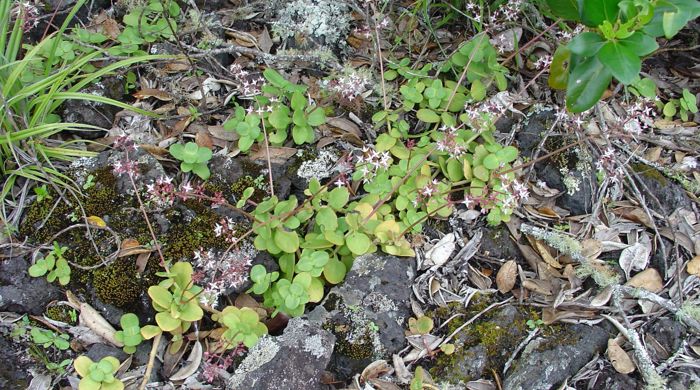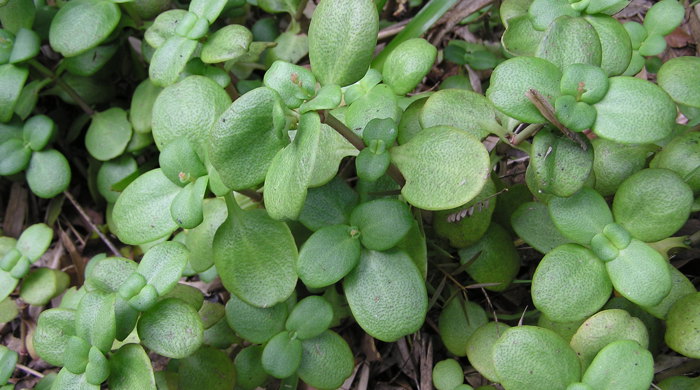Crassula multicava
Pitted crassula
Also known as:
Fairy crassula
Family: Crassulaceae
Origin: South Africa

Regional Pest Management Plan (RPMP) status
- National Pest Plant Accord Species
- Whole region — Sustained control
General description
Perennial succulent herb. Stems are prostrate and creeping. Leaves are fleshy, < 5.5 x 4 cm and covered with small pitted dots. Flowers are pink/red, < 12 mm in diameter and held in inflorescences in spring/summer. Small plantlets develop in flower clusters following flowering.
What you need to know
To help protect our environment:
- You must not breed, distribute, release or sell pitted crassula. As pitted crassula is a National Pest Plant Accord species, these restrictions apply within the Auckland region and across the whole of New Zealand.
- You must not plant pitted crassula within the Auckland region, unless you are transferring an existing plant on your land to another location within the boundaries of the same property.
- You must destroy any pitted crassula on land that you occupy if it has been planted in breach of the above rules and you are directed to do so by an authorised person.
Habitats
Coastal habitats, sand dunes, rock, cliffs, banks, rock walls, volcanic cones, riparian and forest margins.
Dispersal
Vegetative spread from stem nodes and plantlets. Human-mediated dispersal through deliberate planting.
Impact on environment
Forms dense mats, preventing native regeneration. Potential for hybridisation with native Crassula spp.
Control
Site Management
Follow up treated areas 3 times per year. Encourage natural regeneration of native plants or replant treated areas where possible after 2-3 treatments to establish dense ground cover and minimise reinvasion.
Recommended approaches
Physical control
Method: Dig out.
Plant parts requiring disposal: All parts.
Disposal options: Small amounts can be rotted in a covered water barrel or remove to greenwaste or landfill.
Biocontrol
Biocontrol is currently not available for this species.
Community agrichemical control recommendations
Basic Growsafe certified: Foliar spray with 3g metsulfuron-methyl plus 150ml glyphosate per 10L of water.
Certified Handler/Experienced agrichemical user: Foliar spray with 3g metsulfuron-methyl plus 150ml glyphosate per 10L of water and 10ml penetrant.
Caution: When using any herbicide or pesticide please read the label thoroughly to ensure that all instructions and safety requirements are followed.





